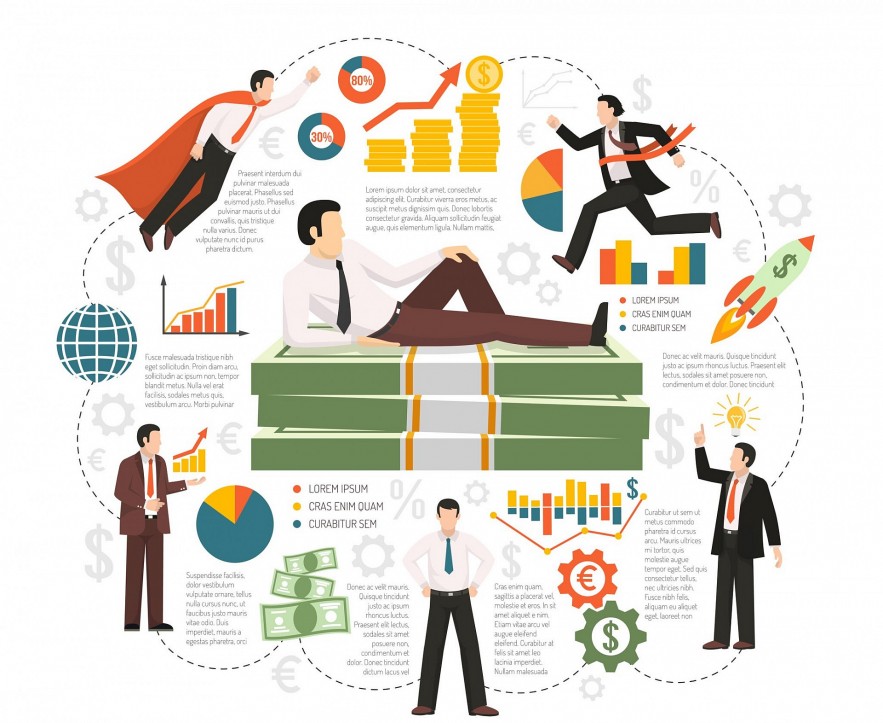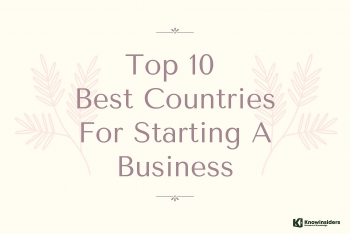Top 24 Most Potential Business Models for Startups in 2024/2025
 |
| Promising Business Models 2024 for Startups |
| Table of Contents |
The business model plays a particularly important role in guiding businesses to act with clearly defined goals.
What is the business model?
A business model is an organization or company's overall plan (can be in text or graphic form) that describes how the company will generate revenue and profits by providing products and services to its customers. defined customer group in a particular market.
The basic requirements of a business model are to specify the type of product or service the business will provide, the marketing method, operating, production and sales costs as well as profit expectations.
The importance of choosing the right business model
The business model is the direction for the business, helping the business develop long-term and create sustainable values. Therefore, businesses need to accurately determine the model that suits their goals and competitive advantage right from the beginning. From there, build specific and detailed plans for each short-term and long-term period to improve operational efficiency and create value quickly.
Building an effective business model requires a lot of time and effort. Especially in the current era, successful models are easily copied by competitors. Therefore, new businesses that want to develop successfully need to create creative, new and unique models to create competitive advantages.
Comprehensive Guide for Building an Effective Business Model
As analyzed, businesses can create a business model that suits their goals and resources. However, to ensure that this model is feasible and brings optimal results, you need to follow these 5 steps:
Step 1: Survey customer needs
Understanding customer needs is the most important step in building a business model. Products or services are created to meet customer needs. Therefore, businesses need to determine what their customers' needs are, what customer groups their products are for, and what they need to do to make customers interested in the product. When identifying target customers, businesses will know who they are, what they need and what they want. From there, businesses can come up with appropriate and effective ideas and business directions.
There are many ways to collect information to survey customer needs such as phone calls, emails, face-to-face meetings, online surveys, using social networks, handouts, etc. Make sure this method is convenient. for your target audience. Survey questions need to be designed to be clear, concise, easy to understand and consistent with the survey's objectives.
You can use the following question types:
• Closed questions: Questions with available answer choices, making it easy to collect data.
• Open-ended questions: Questions that allow customers to answer freely, helping you gather more detailed information.
Benefits of understanding customer needs help businesses:
• Create products/services that meet customers' actual needs.
• Increase your business's competitive advantage.
• Build close relationships with target customers.
Step 2: Come up with a business idea that suits customer needs
After clearly understanding the needs of target customers, businesses need to create products or services that solve the problems, difficulties, and concerns that customers are facing. This is an important goal that every business needs to pursue throughout its operation, because it helps businesses attract customers, generate revenue and develop sustainably.
For a business idea to be suitable, satisfying and satisfying customers, the product or service needs to meet the criteria of price, quality and design.
Come up with a business idea based on the following factors:
• Market demand: This is the most important factor when coming up with a business idea. You need to research what the current market needs, what products or services are popular. If you can meet the needs of the market, you will have a better chance of success.
• Business capabilities: You need to consider capital capabilities, knowledge, skills, experience, etc. to choose a suitable business idea. If you do not have enough ability to implement your business idea, it will be difficult for you to succeed.
• Market trends: You need to grasp market trends to choose a suitable business idea. Emerging market trends often have a lot of development potential.
In addition, businesses also need to constantly create and innovate to meet customer needs in an ever-changing era.
Step 3: Plan appropriate production and distribution costs
Effective cost management is an important problem for every business. In order for a business not to suffer losses, the selling price of the product or service must be calculated so that it is enough to cover costs and make a profit.
Production costs are the largest part of a business's costs, including all costs necessary to produce a product such as raw material costs, labor costs and general production costs. Businesses need to find sources of quality raw materials at reasonable prices, strictly control production processes and build a team of capable personnel to minimize costs.
The production cost planning process usually includes the following steps:
• Collect information: Enterprises need to collect complete information about factors affecting production costs, such as raw material prices, labor costs, depreciation costs of fixed assets, etc.
• Analyze information: Businesses need to analyze collected information to determine controllable and uncontrollable factors.
• Determine goals: Enterprises need to determine production cost goals for a certain period of time.
• Develop a cost plan: Enterprises need to develop a detailed cost plan for each cost element.
• Implement the plan: Enterprises need to implement the established cost plan.
• Monitor and control: Enterprises need to monitor and control production costs during plan implementation.
Some popular production cost planning methods:
• Norm method: This method is based on setting cost norms for each cost element. Actual costs are compared with standard costs to determine the difference.
• Cost analysis method: This method analyzes production costs into different cost factors, thereby determining the causes of cost fluctuations.
• Cost forecasting method: This method uses forecasting methods to forecast future production costs.
In addition to production costs, businesses also need to pay attention to other costs such as marketing, sales, management costs, etc. Businesses need to choose appropriate distribution channels, build effective marketing strategies and Strict cost management to avoid unnecessary costs.
Step 4: Complete the business model and start implementing
After completing the research process, businesses need to begin implementing the business model. During this process, businesses will face many unexpected problems. However, businesses need to be prepared to accept changes in order to adapt and develop.
Classification of Business Models by Transaction Type
Canvas business model
Business Model Canvas is a tool to help businesses systematize their business strategies, created by Alexander OstrerWalder and Yves Pigneur.
This model is used by many of the world's leading companies to manage and form business strategies, creating new growth drivers. The goal of the Canvas model is to position and implement a business plan to stabilize operations and grow profits.
The 9 basic elements in the Canvas business model include:
• Main customer segment (Customer segment)
• Value the product brings to customers (Value Proposition)
• Media and distribution channels (Channel)
• Customer Relationships
• Expected sales streams (Revenue streams)
• Key resources for the project (Key resources)
• Project partner (Key partner)
• Key activities
• Cost Structure
B2C business model
The B2C (Business to Customer) business model is a form of e-commerce in which businesses do business or provide services directly to individual consumers through online channels or traditional stores. This is one of the most popular and widely used models in today's business world.
In the B2C model, businesses create online or physical store shopping experiences to attract and serve end consumers. These businesses often define their goal as providing quality products or services, based on an understanding of customer needs and desires.
The B2C model is simply providing products directly to the end user, some examples of popular B2C models are:
• Restaurant
• Coffee shop
• Grocery store
• Grocery
• Hair and nail salon
• Beauty spa
• Pet store
B2B business model
The B2B (Business to Business) business model is a form of e-commerce in which businesses or organizations purchase and trade products, services or materials with each other. Unlike the B2C (Business to Customer) model - where businesses transact directly with individual consumers, in B2B, transactions mainly take place between businesses or organizations.
The B2B model typically involves providing products or services of a professional and high quality nature, often used for manufacturing or supporting the business operations of other businesses. B2B transactions can include the purchase and sale of materials, equipment, software, consulting services, and many other products or services.
C2C (Consumer to Consumer) business model
The C2C (Customer to Customer) business model is a form of e-commerce in which individuals or consumers directly buy and sell goods or services to each other through online platforms or intermediaries. third-party. This is an increasingly popular trend in the business world and has changed the way people shop and do business online.
The most obvious example of the C2C model is e-commerce websites or applications, auction websites, and exchange transactions.
Top 20+ Most Popular And Successful Business Models in the World 2024
 |
| Business Model - How to Succeed |
There are many new business models today that exist in many different forms that businesses apply to provide values and solutions to customers. Below, KnowInsiders.com shares with you the most popular types of business models.
1. Direct sales model
Direct sales model or direct business model, is a form of business in which products or services are sold directly from the manufacturer or supplier to the consumer without going through intermediary channels such as traditional retail stores. The direct sales model is commonly used in fields such as technology, cosmetics, dietary supplements, healthcare products, and many other industries.
An example of a business that successfully applies this model is DELL, a leading personal computer manufacturing and trading enterprise in the world today with sales methods via phone or online (email, website...) without the participation of intermediaries such as agents or distributors.
2. Online business models
In the era of technological development, the online business model is becoming more and more popular and exploding. This form of business is mainly done on platforms such as social networks, e-commerce platforms and websites.
Compared to the traditional business model, the online model has many outstanding advantages such as:
• Save space and staff costs
• Reach a wide range of customers
• Convenient for customers in choosing and paying
The online business model is convenient for both sellers and buyers. Sellers can easily start a business and reach potential customers, while buyers can shop anytime, anywhere. That is why online selling is considered a current and future trend.
 How To Start An Online Business: Best Ideas For Success How To Start An Online Business: Best Ideas For Success |
3. Affiliate marketing model
Affiliate marketing is a form of making money by recommending other people's products/services on online platforms. Marketers will receive commissions when customers click to purchase or view products/services through their links.
For example, KOLs/Reviewers on TikTok, Facebook,... can earn commissions by recommending products on Lazada and Shopee and attaching marketing product links in their articles or videos. When a customer clicks to buy or view a product through their link, they will receive a commission from the product/service provider.
4. Agency business model
Businesses based on the Agency model are units that provide marketing services to other businesses. The agency's personnel are marketing experts with expertise and experience. They will advise and implement marketing campaigns to help client businesses achieve their goals.
For example, the Durex brand has partnered with Agency Dentsu Aegis to carry out marketing campaigns to spread unique messages, attract user interest and increase awareness.
5. Consulting business model
A consulting business model is a business model in which a business provides consulting services to other businesses. Businesses will hire experienced consultants to solve customer problems. Customers will pay the business an hourly or daily fee.
For example, HRchannel is a consulting business that provides talent recruitment services. In addition to recruitment, HRchannel also provides consulting and training services to help businesses improve operational efficiency.
6. Freemium business model
Freemium model is a business model that combines free and paid. This is a very popular model in businesses selling software products - Software as a service (SaaS). Businesses provide a free version for users to experience, in which some features or usage time are limited. If users are satisfied with the free version, they can upgrade to the paid version for more premium features.
For example: Office applications: Microsoft Office offers a free version for users to use on mobile phones and tablets. This free version includes basic features such as text editing, spreadsheets, and presentations. Users can upgrade to the paid version to use more premium features such as advanced formatting, collaboration, cloud storage, etc.
7. Multi-sided Platform model
A multi-sided market business model is a business model in which a business provides services to both market participants. In this, businesses will find the intersection between the two parties and provide services to help them solve each other's needs.
8. Peer-to-peer business model
Peer to Peer business model is a business model in which the business acts as an intermediary directly connecting the supply and demand sides. Businesses will profit from commission fees after each successful transaction.
9. Business model in the form of registration
The subscription business model is a business model that profits from users paying fees to use the service on a fixed cycle (day, month, year). Users can renew their subscription to continue using the service. This model requires businesses to make efforts to provide attractive services and maintain customers.
10. E-commerce business models
E-commerce is a form of online business in which buyers and sellers can transact with each other via the internet. This model has become a key sector of the economy, and is forecast to continue to grow strongly for many years to come.
To build an e-commerce model, sellers need to create a product catalog on a website or e-commerce platform. Buyers can order online and pay via bank card, e-wallet, etc. The seller will base on the order to manage customer information and proceed with delivery.
11. Profit model from accompanying products
This business model is based on selling the main product at a low price to profit from the required accompanying products. For example, printers are sold at a low price so that users can buy more ink at a high price.
12. Privacy model
The growth of the Internet and the rise of companies collecting user data have threatened people's privacy. To solve this problem, the Privacy model has been applied. This model ensures that the subject is not observed or monitored by anyone or anything.
In addition to Google, some other search engines such as DuckDuckGo are also applying this model. The tool will transfer user data to private navigation and make money by selling local keywords.
 |
| Most Successful Business Models |
13. Franchise business model
Among the popular business models in the world today, franchise business is considered the most familiar and popular model. The franchisor will entrust the franchisee with the right to sell products or services, brands, business secrets, etc. and collect fees for a certain period of time.
Illustrative examples of this form are chain store brands such as Mixue, KFC fried chicken, Lotteria, Starbucks, Subway, McDonald's,...
14. Education industry business model
This is a business model based on education with the main target customers being teachers, students and fellow students. Businesses operating in this form provide products and services that are tools and applications that can meet the learning and working needs of customers in the field of education to earn profits. It can be said that this model is based on the principle of mixing the Freemium model and the subscription form to learn many lessons and use many advanced features.
15. Blockchain business model
Blockchain is a distributed technology that allows data to be stored in the form of linked blocks. This data string cannot be changed or deleted, but can only be supplemented with additional information.
Blockchain is widely applied in many fields, including finance, supply chain, healthcare, education,... Some businesses are applying blockchain in their business models such as Binance, Northern Trust,...
16. Family business model
The family business model is a form of private enterprise in which the business owner and core management members are related by blood. A prime example is Samsung, with founder Lee Kun Hee and members of the Lee family holding the majority of the group's shares.
17. Multi-brand business model
A multi-brand business model is a form of business that owns and manages many different brands, in addition to the main brand. These brands can operate in the same field or many different fields.
The benefit of this model is to help businesses minimize the risk when a branch brand is not popular with customers. This is because each brand has its own positioning and market, so the failure of one brand does not affect the others.
Some typical examples of the multi-brand model are giants in the FMCG industry such as Unilever (Lifebuoy, Dove, Vim, Knorr, Close Up...) and P&G (Comfort, Head&Shoulder, Tide, Downy,...).
18. Humanized business model
Humane business is a human-centered business model that aims to create sustainable profits without harming the environment and society. Businesses following this model will invest in human resource development, improve the lives of workers, and improve human life services.
19. Direct-to-consumer business model
The direct-to-consumer (D2C) business model is a model in which businesses interact directly with customers without going through an intermediary. The benefit of the D2C model is that businesses can easily convey their messages to customers, receive quick responses, and better understand their needs.
20. The business model is based on the distribution system
A business model based on a distribution system is a model in which businesses connect with final consumers through members of the distribution channel. This is the most popular model in business, especially for consumer goods businesses.
21. The business model is based on multi-source aggregated revenue
Businesses with revenue from many sources can increase profits and expand scale by exploiting many other sources of revenue, not just from one product or one set of customers.
22. Mobile business models
This is a quite popular model in the world, the most common form of food business is on pickup trucks and buses. Mobile means being able to move to many places by vehicle to conduct business without having to build a permanent store. This model can be applied to many different industries, from dining, entertainment to services,...
Advantages of mobile business model:
• Cost savings: Because there is no need to rent premises, the mobile business model can help save significant costs.
• Flexible, easy to move: Vehicles can easily move to densely populated areas where there is great shopping demand.
• Reach many customers: The mobile business model can reach many customers in many different locations.
Popular types of mobile business models:
• Selling fast food, snacks, street food,...
• Selling clothes, fashion accessories, souvenirs,...
• Hair cutting trolley, mobile car repair,...
23. Pet hotel business model
The pet hotel business model is a specialized service for pet owners, where they pay for the care and accommodation of their pets for short or long-term periods, such as when they travel, work. This is a rapidly growing industry that is increasingly popular in this day and age, when many people consider their pets as family members.
This model provides services such as shelter, nutrition, medical care, and entertainment for pets. Pet hotels are often designed with safe, comfortable and convenient environments, providing adequate food, water and appropriate entertainment.
24. Business model from content provided by users
The user-provided content-based business model is a unique form in which businesses build an online platform that allows users to share and provide content. This platform attracts users thanks to useful information that solves their needs. As the number of users increases, the platform will make profits through advertising.
Quora is a good example of this model. This platform allows users to ask and answer each other's questions. Thanks to that, Quora provides a huge and useful treasure trove of knowledge for users. Quora makes money through ads displayed on the platform.
Epilogue
The business model is the foundation for the success of every business, especially for those who want to start a successful business.
Therefore, you need to research carefully and determine specific, clear directions of action to build a suitable business model if you intend to start a business.
Hopefully the above information from KnowInsiders.com will help you find the most suitable business model. Good luck!
 Top 10 Best Countries For Starting A Business In The World Top 10 Best Countries For Starting A Business In The World A new survey has named the best countries for starting a business in 2022. Read on to know top 10. |
 The Best Tips To Get A Small Business Loan for Startup Success The Best Tips To Get A Small Business Loan for Startup Success If you want to launch a business, securing a small business loan is a crucial step. This article will describe what it is and how ... |























